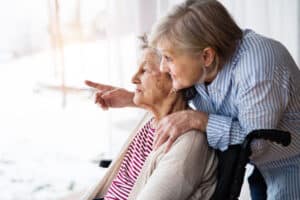
As temperatures drop and snow begins to fall, winter presents unique challenges for older adults. For seniors aging in place or living with limited mobility, icy conditions and colder weather can increase the risk of accidents, illness, and isolation. Caregivers play a crucial role in ensuring older adults stay safe, warm, and connected during the coldest months of the year. These essential precautions can make all the difference.
Prioritize Safe Walkways and Entrances
Snow and ice are more than seasonal inconveniences—they’re serious hazards. Older adults are particularly vulnerable to falls, which can result in fractures or longer recovery times. While caregivers often take the lead in keeping pathways clear, some situations require quicker, more professional intervention. Googling “snow removal near me” can help seniors find immediate, professional assistance—often more reliable than waiting on family members or depending solely on caregivers, especially when conditions are severe.
Prevent Slips and Falls Indoors
Winter conditions don’t just create hazards outside. Snow and slush tracked indoors can lead to slick floors, increasing fall risk. Nonslip mats at doorways, absorbent rugs, and supportive, indoor-safe footwear all reduce the likelihood of slipping. Additional support tools like grab bars and proper lighting in stairways and bathrooms add safety throughout the home.
Maintain a Safe Indoor Temperature
Maintaining consistent indoor warmth is critical for older adults, whose bodies may not regulate temperature as efficiently. Keep thermostats set to at least 68°F and ensure heaters, vents, and chimneys are inspected early in the season. Seniors may also benefit from layering clothing or using thermal blankets. These precautions help prevent hypothermia and associated health issues.
Understand Medical Risks in Cold Weather
Cold weather brings more than discomfort. It introduces real health risks for older adults, particularly those with chronic medical conditions. Reduced circulation, slower response to temperature changes, and complications from diseases like diabetes or arthritis all increase vulnerability. Older adults face increased cold-weather safety risks due to age-related changes and chronic health conditions, making preparation essential during the colder months.
Prepare for Power Outages
Heavy snow and ice storms can knock out power, sometimes for hours or days. This poses a serious threat to seniors who rely on electric heating or medical equipment. Caregivers should prepare an emergency kit with essentials such as flashlights, blankets, water, canned foods, batteries, and medication backups. In storm-prone areas, a backup generator may be a wise investment.
Minimize Risk of Outdoor Injuries
Even a short walk to the mailbox can pose serious risks during winter. Porches, steps, and driveways become hazardous with just a thin layer of ice. Routine snow and ice removal around walkways can significantly help prevent accidents during winter, especially for seniors with limited mobility. This is particularly important when considering the high risk of falls on slippery outdoor surfaces.
Encourage Social Engagement and Routine
Staying indoors during winter can also lead to emotional challenges. Limited mobility and time indoors can also lead to the emotional effects of winter, including loneliness. Regular video calls, hobbies, and safe outings when possible can help keep spirits high and routines intact. Caregivers should look for subtle signs of withdrawal or sadness, as these could indicate more serious emotional health concerns.
Build a Safe, Winter-Ready Home
Preparing the home for winter is a preventive step that shouldn’t be overlooked. From ensuring working smoke and carbon monoxide detectors to keeping salt or sand near entrances, every detail matters. A seasonal home checklist can help families address common risks. Incorporating safe living practices year-round supports a safer environment regardless of the weather.
Seek Professional Support When Needed
While caregivers provide essential daily support, some winter safety concerns require a professional touch. Whether it’s sealing up drafts, assessing indoor air quality, or removing built-up snow and ice, outsourcing certain tasks ensures better outcomes. This is especially true when speed and precision are critical for the senior’s well-being.
Conclusion
A safe winter for seniors depends on both preparation and attentiveness. From outdoor hazards to emotional isolation, caregivers and family members must approach winter with a proactive mindset. The right strategies—combined with timely action—can make this season safer, healthier, and more manageable for aging adults.